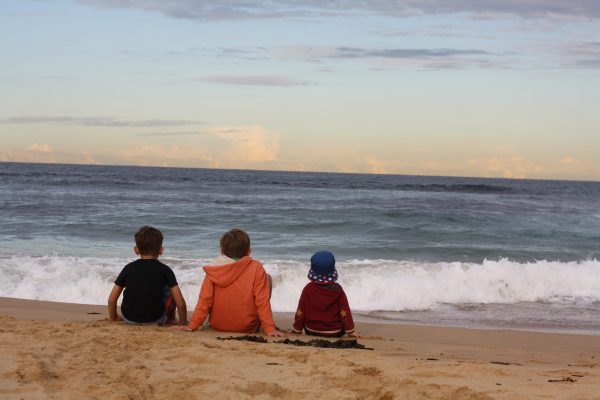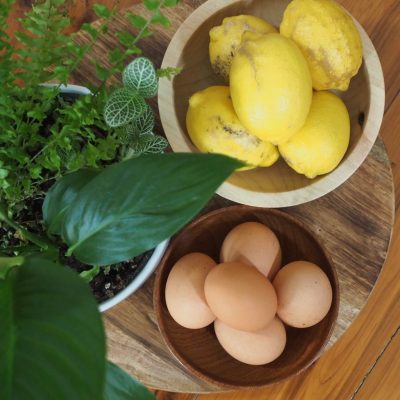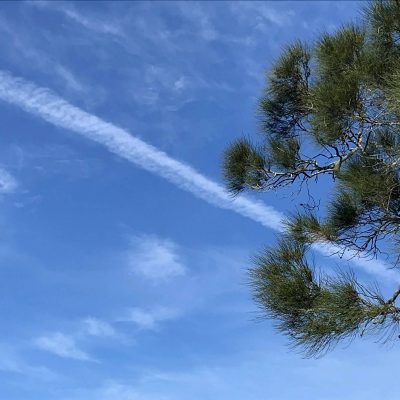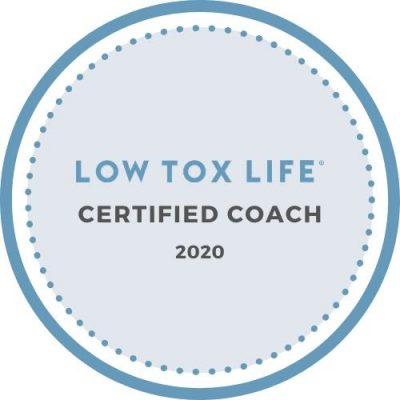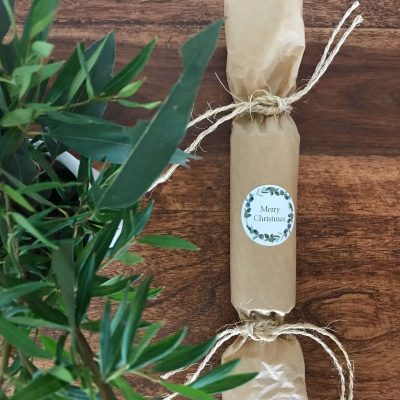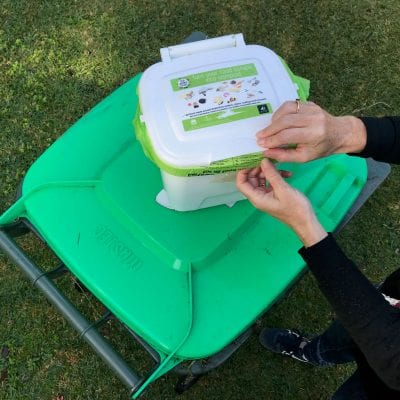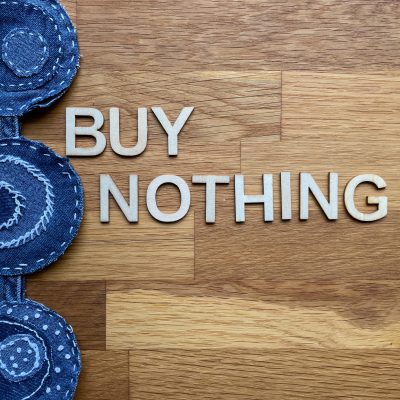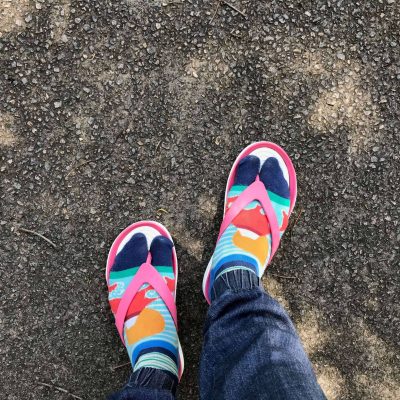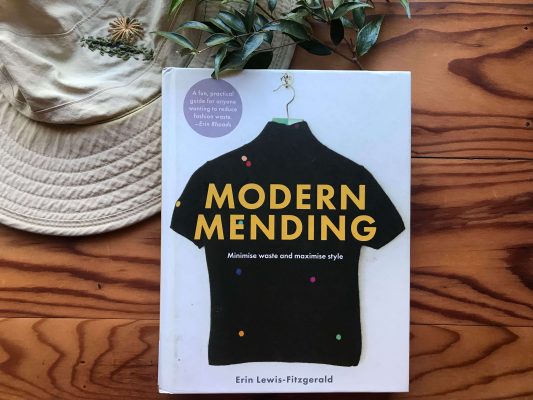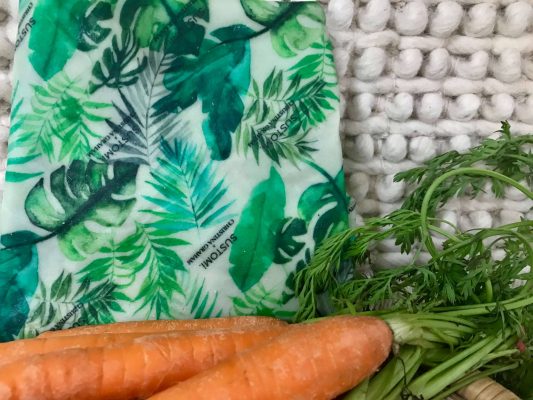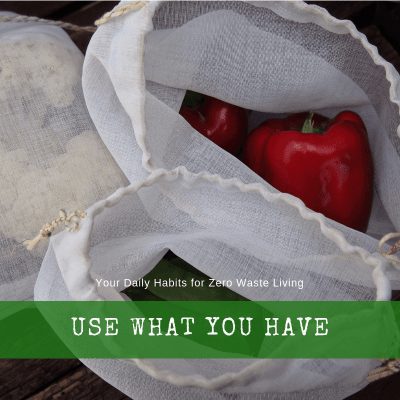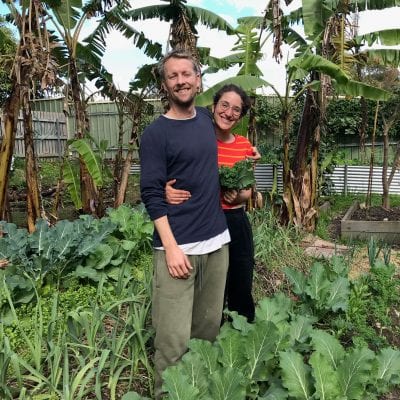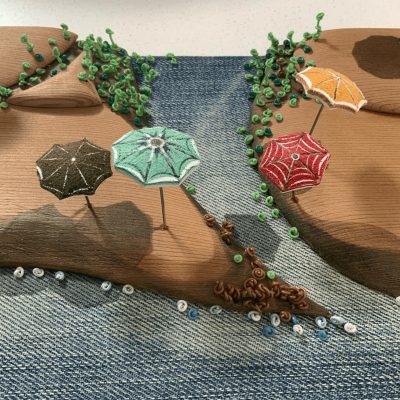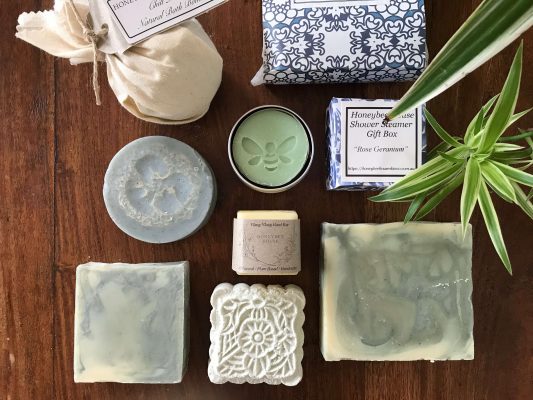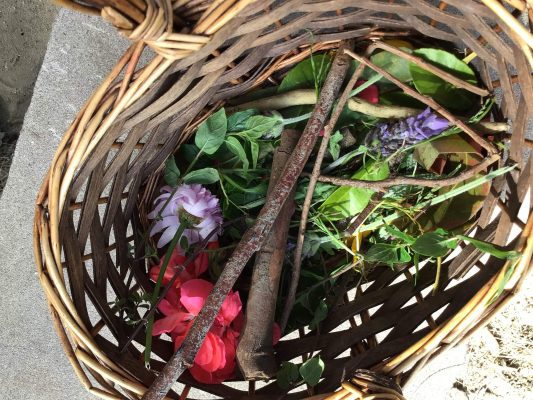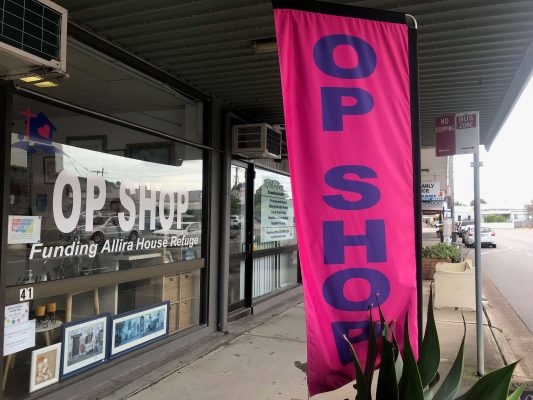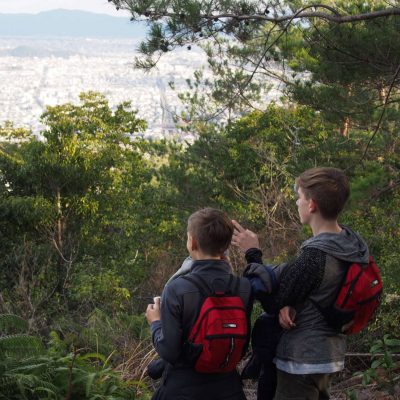Community, Consumption, Local Community Action, Reduce & Reuse
Circular Economy from a Localised Perspective
This article is a summary only of the podcast conversation “6. Circular Economy from a Localised Perspective”. Listen here to the full episode on Spotify podcasts or Apple podcasts, and go here for the relevant links mentioned in the podcast, or read on to enjoy the photos and summary of how The Full Circle Collective embraces the principles of circular economy and makes it actionable and realistic for the Newcastle community.
Circular Economy from a Localised Perspective
You frequently hear the phrase “circular economy” from governments and businesses. But do you know what it really means from a local community perspective? Sharing their perspective are Thomas Michel and Bianca Bartlett from the Newcastle nonprofit startup, The Full Circle Collective.
What is the Full Circle Collective?
Established in 2024, The Full Circle Collective supports social enterprises, local businesses, community organisations and makers championing circular economy principles through resource recovery, repair, and reuse. Located in Newcastle, it serves as a retail shop for items that use waste as a resource, a workshop space for community upskilling and an exhibition space for local makers and innovators.
The Collective concept grew from popular local sustainability projects like the Wallsend Op Shop Trail and aims to strengthen community connections while promoting sustainability, to create a positive impact on a local scale.
Not all businesses have a 100% circular approach in their products, but it’s about celebrating those who make an effort to do a principle of circular economy really well. Particularly when it comes to design.
The new business is located in a building on Hunter Street, owned by the Ian and Shirley Norman Foundation, which supports a community of practice for community-based and other social enterprises.
The Full Circle Collective Name
The name reflects the principles of the circular economy in a way that’s accessible and easy to understand. The image of a circle was a natural choice, symbolising wholeness and continuity—especially a full circle, which represents abundance, sharing, and the collective strength of an inclusive community.
What does “Circular Economy” Mean?
Photo attribution: The Ellen Macarthur Foundation
The circle image is a simple analogy to explaining the circular economy. The circular economy is a way of thinking about how we produce, use, and dispose of materials, offering an alternative to the traditional linear model of “take, make, dispose.”
In the linear model, resources are extracted, turned into products and eventually tossed. The circular economy, however, focuses on designing out waste, keeping materials in circulation for as long as possible at their highest value, and regenerating natural systems. It embraces three core principles:-
- reducing waste through thoughtful design,
- extending the life of resources and,
- supporting natural cycles.
This approach to design and waste isn’t new. Thomas, co-partner of The Full Circle Collective says that the term “circular economy” is “a rebranding of some strong old traditions and traditional knowledge that have been around for as long as humans have been around”. It draws on traditional practices like repairing shoes at the cobbler or mending clothes with a seamstress, as well as Indigenous knowledge of stewardship and land regeneration and caring for country. It’s a modern reimagining of these age-old practices, promoting a more sustainable and respectful relationship with our environment.
What is Waste & How Wasteful are we?
The term “waste” is often misleading. It suggests that discarded materials have no value, but in reality, much of what ends up in landfills still holds significant use and economic potential.
The word “waste” comes from the Latin “vastum,” originally referring to barren or uninhabitable lands—areas deemed of no use to humans. Today, however, what we label as waste is far from useless; it surrounds us and holds potential that we overlook. Even “waste facilities” are filled with resources that could be repurposed, demonstrating that the term “waste” distracts from the true value of these materials.
Waste is rising not only due to population growth but also on a per capita basis in developed countries, with volumes increasing each year. Did you know the average material consumption in Australia is about 46 tonnes per person annually, which is three times the Organisation for Economic Co-operation & Development (OECD) average of 17.7 tonnes per person. This increasing waste generation has become deeply embedded in our culture, creating a “throwaway” mentality. However, overcoming this mindset faces resistance from the strong, culturally ingrained behaviours that persist.
The Value of Rethinking Waste
One of the greatest challenges of our generation is to break away from the throwaway mindset. The urgency is clear: our current practices are unsustainable in both the short and long term. We simply don’t have the resources or space to keep extracting materials and discarding them indefinitely. The Earth’s biosphere cannot sustain this behaviour.
Therefore, it’s crucial to shift our perspective—from seeing waste as someone else’s problem to adopting a circular approach that emphasises the preservation and reuse of resources for as long as possible.
The value of the circular economy is its ability to capture the economic potential of resources that can be used over and over again. This is in contrast to the linear economic model, where the economic value peaks at the point of sale.
As Reverse Garbage in Sydney effectively highlights, viewing waste as a resource shifts your mindset from waste as rubbish to waste as a valuable opportunity.
Keeping products in use for longer not only conserves resources but also reduces the need for new materials to be extracted from the earth. The non-profit Collective exemplifies this by showcasing small businesses that successfully capture value through their products, sustainable practices and workshops.
Who’s Responsbility is it Anyway? Key Elements of Circular Economy in Manufacturers
At the moment, there’s a strong emphasis on customer responsibility to dispose of waste from no-longer-working products. However, the co-founder stresses the importance of holding larger producers and the corporate sector accountable for the responsibility of waste disposal. Our social and cultural systems have normalised the practice of companies externalising the costs of pollution and waste, which places the burden on households rather than on those who extract resources and manufacture products.
While there are significant legal, regulatory, and practical barriers to shifting this responsibility back to producers, slow progress is being made. Key elements such as product stewardship, planned obsolescence, and products as a service are essential for encouraging producers to take responsibility for their products and contribute to a wholistic circular economy business model.
Product Stewardship
Product stewardship focuses on shifting the responsibility for waste throughout the entire lifecycle of a product back to the producers. This means designing and producing items that are easier to recover, reuse, repair, and recycle.
Thomas notes that product stewardship legislation is slowly trickling into Australia; however, there’s significant corporate resistance to these laws, “because it’s a total disruption of the business model that’s worked very fine for the high end of town for many, many generations”.
Planned Obsolescence
Planned obsolescence is the practice of designing products to fail quickly or become outdated in the short to mid-term. The primary goal is to generated sales of new products and upgrades. This approach is particularly common in industrial and consumer goods such as whitegoods, mattresses, electronics and clothing.
Mattresses are prime examples of products that could be redesigned to eliminate planned obsolescence. When components like inners, springs, or covers wear out or break, customers must get rid of the entire mattress rather than replacing individual parts. Mattresses contribute significantly to landfill waste. Thomas highlighted a straightforward and workable design modification—such as adding a zipper on the cover for easy internal access. This simple adjustment would make repairing easier and extend the lifespan of each mattress.
Electronics are another example of planned obsolescence. When items are made using pop rivets, repair becomes nearly impossible. Thomas recommends replacing pop rivets and spot welds with disassemblable panels. This switch allows for easier access to components, such as the small motor at the back of an appliance, to be fixed. An excellent solution with the appliance’s main body is still functional.
If producers aren’t responsible for the end product, they’ve little incentive to extend its lifespan by another 5 – 20 years. Instead, they’d prefer to sell you a new one. Planned obsolescence is closely linked to product stewardship.
Product as a Service
Offering products as a service encourages brands to adopt product stewardship principles leading to more efficient designs and products that are built to last. This allows manufacturers to reclaim items and repurpose them into new products. Once again, this ties back to the key concept of product stewardship. Thomas acknowledges “There’s lots of really viable business models that can provide circular solutions to keep us living comfortably and conveniently, but just do it a little bit more cleverly and with a lot more with resource recovery at the heart of it”.
Local Business Examples of Circular Economy
- Resourceful Living – recycling plastics into new products, such as homewares and building products
- Salamander Bay Recycling Centre – Salvage centre and op shop adjacent to the Port Stephens Waste Transfer Station
- Bilt – a building consortium that builds large infrastructure projects such as the Atlassian headquarters in Sydney
- Purple Card Project – collaborating with Resourceful Living on a research and development project about recycling 100% polyester clothing.
Solar Panels’ Limited Resource Recovery
Image Credit: movetonewcastle.com.au
There’s been a rapid uptake in the adoption of solar panels over the last decade, and Australia has been a strong adopter of this form of renewable energy, with one in four Australians now having solar panels on their roofs. But what happens to these solar panels when they reach the end of their usable life?
The NSW Office of Energy and Climate Change has highlighted this issue, with “concerns about environmental impacts, large increases in clean energy technology waste, resource supply constraints, national security risks, and the need for a just transition for workers.” If these concerns are not properly addressed, they could hinder the transition to clean energy. The January 2023 Issues Paper titled “Going Circular in Clean Energy” acknowledges that the government must ensure the entire cradle-to-grave process—designing, producing, deploying, and decommissioning clean energy technologies—is sustainable.
Thomas acknowledges that coal-powered power generation produces significant waste, as evidenced with the Eraring power station in Lake Macquarie, which has produced millions of tonnes of fly ash (soot from the power plant) residue that abuts the lake.
Current solutions to solar panel waste often involve a knee-jerk reaction of discarding them, as recycling can be too challenging. However, the co-founder recommends we need industry-wide solutions to address this issue, and such solutions already exist, like the Second Life Solar project by Blue Tribe Consulting, which provides testing devices for panel functionality.
An alternative reuse of solar panels that’s demonstrated at The Full Circle Collective is to upcycle decommissioned solar panels as the customer service bench in their shop.
Both of these examples show how circular economy principles can be integrated into clean energy technologies to create new economic value whilst reducing waste, emissions and environmental impacts.
A Localised Circular Economy
As waste continues to rise, there’s a pressing need to shift our mindset from viewing waste as rubbish to recognising it as a valuable resource. The Full Circle Collective is a localised circular economy solution that strengthens community connections and promotes sustainability, encouraging a more responsible and resource-efficient future.
The ReNewy Living Podcast was recorded on Awabakal country. I wish to acknowledge the traditional owners of the land and waters in the Newcastle and Lake Macquarie region of New South Wales.
I hope you’re feeling more confident about doing better for our people and planet by taking a start where you live approach to living sustainably. If this episode has spurred you into action, please feel free to share it with your friends. It would mean the world to me!
Listen into the stories and voices of this story here at Spotify podcasts and here at Apple Podcasts… And you can also sign up to my regular emails here… I look forward to sharing more stories with you next time.
6. Circular Economy from a Localised Perspective
Links from the Podcast episode
- The Full Circle Collective
- Wallsend Op Shop Trail – a project initiative by Purple Card Project
- Ian and Shirley Norman Foundation – on a purpose to encourage and support organisations that are capable of responding to social and ecological opportunities and challenges.
- Purple Card Project – enabling local communities to have a positive environmental impact through small scale environmental action.
- Circular Economy: Waste and Materials – OECD iLibrary – Statistic about waste generation per person in Australia
- Reverse Garbage (Sydney) – a creative reuse centre making a difference in the world by reducing waste and creating change in the way we look at resources.
- Resourceful Living – recycling plastics into new products, such as homewares and building products
- Salamander Bay Recycling Centre – Salvage centre and op shop adjacent to the Port Stephens Waste Transfer Station
- Bilt – a building consortium that builds large infrastructure projects such as the Atlassian headquarters in Sydney
- NSW Office of Energy and Climate Change Issues Paper: Going Circular in Clean Energy. January 2023 – to understand how NSW can create more value from a circular clean energy sector
- Out of the Ashes Summary Report with recommendations by the Hunter Community Environment Centre re Coal Ash residue in Lake Macquarie
- Second Life Solar Project by Blue Tribe Consulting – a project that found a solution to decommissioned solar panels
- Australia leads world in roof top solar as share of renewables jumps to 35% – Media Release of Hon. Angus Taylor MP. March 2022
- The 10 R’s of Circularity – explained as a simple diagram from highest to lowest priority
- Textile Waste in Australia. Reducing Consumption and Investing in Circularity Report by The Australia Institute. May 2024
- Thanks to Awesome Newcastle for their support to make this podcast happen
Other Relevant External Links
- Social Enterprise Australia – a social enterprise is a business that puts people and planet first. Social Enterprise Australia is the peak body for social enterprise in Australia.
- Ellen Macarthur Foundation – Butterfly diagram of the Circular Economy, which illustrates the continuous flow of materials in a circular economy.
- Product Stewardship Centre of Excellence (Australia) – an independent, not for profit charity, that seeks to reduce waste generation and create positive environmental and social outcomes through sustainable product design, resource conservation, product reuse, and recycling.
- Soft Landing Mattress Recycling – A not-for-profit social enterprise that keeps end-of-life mattresses and ensemble bases out of landfill and recover components to recycle.
- Australian Circular Economy Hub – What is the linear economy and why do we need to go circular?
- Australian Circular Economy Hub – Product as a service in Australia
- Fast Fashion by Clean Up Australia
Relevant Blogposts with ReNewy Living
- All blogpost episodes with links from The Renewy Living Podcast
- Blogposts that have relevance to using waste as a resource…
Stories, News & Voices
Sharing stories that strengthen our commitment to nature, community, and a healthier planet.










